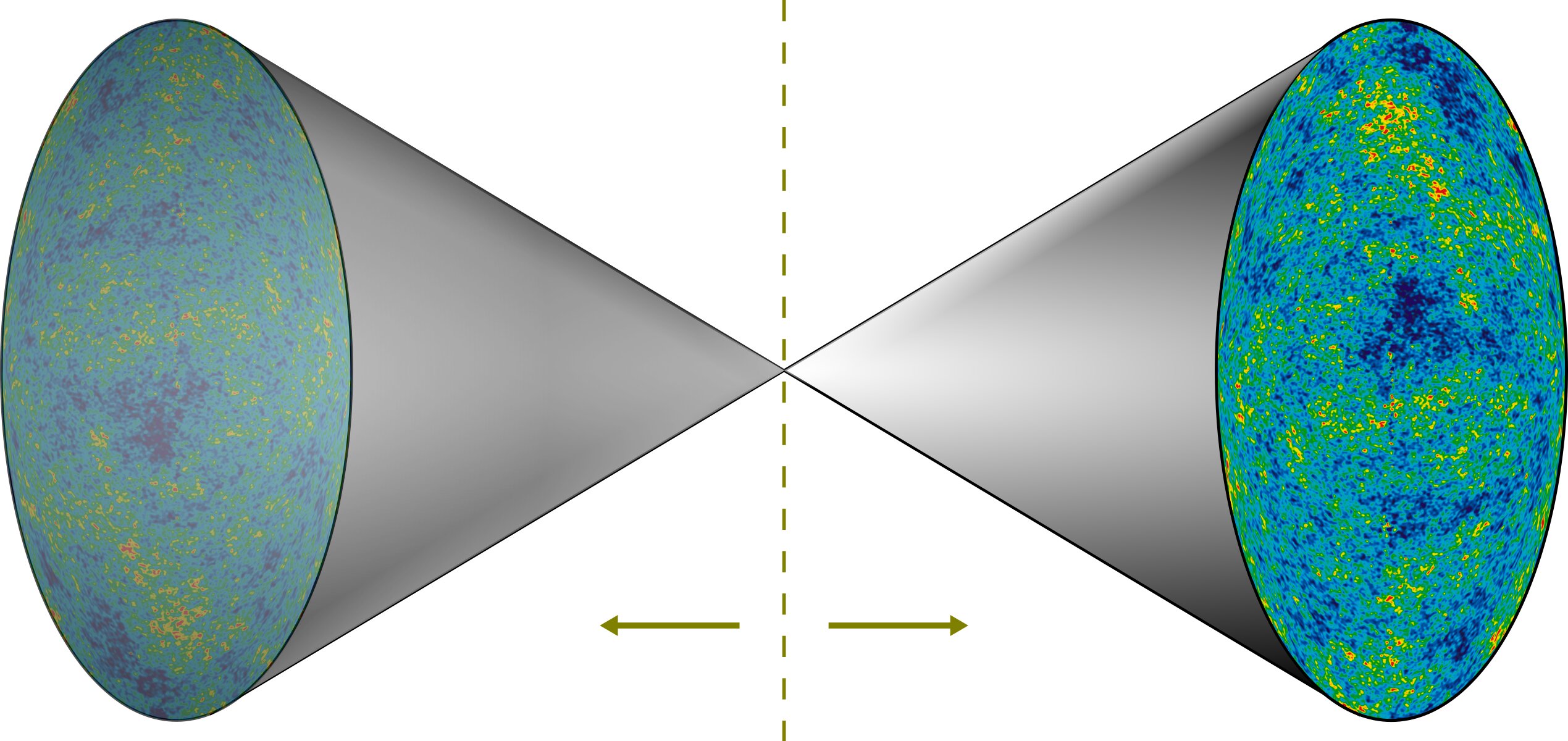A description of a universe-antiuniverse pair. Credit: Wikipedia, CC
x CLOSED
A description of a universe-antiuniverse pair. Credit: Wikipedia, CC
The accelerating expansion of the current universe, believed to be driven by a mysterious dark energy, is one of the greatest puzzles in our understanding of the cosmos. The standard model of cosmology, called Lambda-CDM, explains this expansion as a cosmological constant in Einstein’s field equations. However, the cosmological constant itself lacks a complete theoretical understanding, especially with regard to its very small positive value.
To explain the accelerated expansion, physicists have proposed alternative explanations such as quintessence and modified theories of gravity, including scalar-tensor-vector gravity. Furthermore, explanations beyond four dimensions, such as braneworld scenarios in the Dvali-Gabadadze-Porrati (DGP) model, modify gravity at large distances due to the effect of a larger amount of dimensionality in our four-dimensional brane and variable tension. to bran.
My new model
In my work, I propose another model to explain the current accelerated expansion of the universe. Unlike existing models, this does not require any form of dark energy or modified gravity approaches. However, there is a price to pay: we need an anti-universe partner whose timeline is inversely related to our universe.
There are strong arguments supporting this concept. From the perspective of quantum theory, it is natural for the universe to be created in pairs. More recently, Boyle et al proposed that the universe does not spontaneously violate CPT (charge, parity, and time reversal symmetry), but rather that the universe after the Big Bang is the CPT image of the universe before it, pointing toward an anti-universe partner.
Latest results
In a recent paper published in Gravitation and Cosmology, I used key concepts from quantum theory, such as relative entropy, and from general relativity, such as the zero energy condition, which corresponds to the positive energy condition. My findings suggest that the universe naturally expands in an accelerated manner.
Relative entropy, which requires two states, in this case, corresponds to the universe and its partner antiuniverse. Accelerated expansion seems inevitable in a universe created in pairs that respect the zero energy condition. This result is quite surprising, and readers familiar with Hawking’s area theorem may notice some similarities. The area theorem also deals with causal horizons and requires that the zero energy condition hold.
In our model, the causal horizon corresponds to the Big Bang. The results apply equally to the anti-universe partner.
To summarize, the accelerating expansion of the universe is a challenging topic that continues to drive scientific effort. Building on existing theories, my model provides an explanation using standard concepts from quantum theory and general relativity, without the need for elusive dark energy.
The results show that accelerated expansion is inherent to a universe created in pairs. Furthermore, the study of causal horizons can deepen our understanding of the universe. The beauty of this idea lies in its simplicity and naturalness, setting it apart from existing explanations.
This story is part of Science X Dialog, where researchers can report findings from their published research articles. Visit this page for information about Science X Dialog and how to participate.
More information:
Naman Kumar, On the Accelerating Expansion of the Universe, Gravitation and Cosmology (2024). DOI: 10.1134/S0202289324010080
Naman Kumar is currently a Ph.D. student at the Indian Institute of Technology, Gandhinagar, India. Kumar’s areas of interest include general relativity, cosmology, the inner world, and spacetime thermodynamics.
